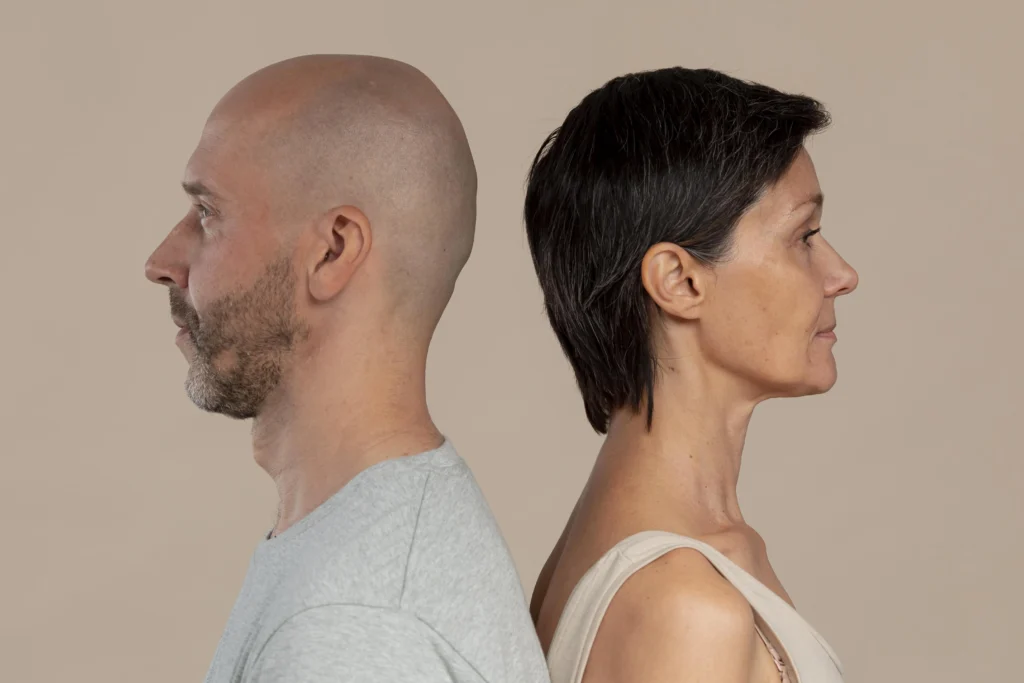Hair Transplants for Hair Loss in Men and Women

Losing your hair can be a denigrating event. Your lose confidence in your appearance when you know others can see that growing bald spot on top of your head. Society places so much importance on appearance that even the balding person knows, he or she must see past the platitudes. “No, it’s not cosmopolitan.” “I don’t remind you of Kojak, Ul Brenner or Michael Jordan.” “I’m just a guy who’s losing his hair and it isn’t flattering.” “And, Lord knows, this look does not look good on a woman!”
Today the person who’s balding has choices for maintaining the look of a full head of hair. Options range from replacing your hair strand by strand, hair transplant, using chemicals like Monoxidil to stimulate hair growth or using laser photo therapy to promote hair growth. All of these methods can be costly, still there is one course of action not on this list yet. It’s hair replacement, the simple act of using human hair to replace what’s missing.
Hair replacement can appeal to your desire for privacy. You can be fitted with the appropriate hair replacement in the comfort of your home. It doesn’t matter if you’ve lost a small patch of hair in the center of your head or are suffering from male pattern baldness that extends from the nape of your neck to your forehead, hair replacement can be utilized to restore your appearance. If you prefer, you can attend a hair replacement clinic and receive the same personalized attention. You may prefer a more permanent solution like hair transplantation which has developed into very natural hair growth patterns.
Hair transplants are taken from the back of the head where hair always grows, so it is scientifically proven that hair transplants do not revert to baldness. There are many methods used to perform hair transplants. Many have very natural looking results when completed. Your surgeon may use follicular unit hair transplantation, transplanting units of hair in groups of 1 to 4 hair follicles, staggering them and placing them very close together to prevent the ‘cornrow’ affect or any unnatural appearance of hair growth. This is consistent with the natural growth of hair which is not in rows, but small groupings. The units are harvested from the back of the head where male pattern baldness does not affect hair growth. If you observe any male who has lost a significant amount of hair, you will notice that characteristic circle that expands from the top of the head and gets larger until it finally stops leaving a large ring of baldness surrounded by an even larger ring of hair that wraps around the base of the head and usually includes the area near the ears. This is called the ‘donor area’ for hair transplant patients.
Hair transplant surgeons must be trained to create a natural look. Up to 3,000 follicular units can be transplanted in one session. A local anesthetic is used to prevent pain and if needed pain pills can be prescribed. Most transplant patients are so comfortable that they can watch TV and talk to the staff during the transplant procedure. The transplant recovery time can be a few as hours and many patients can return to work to next day.
Hair transplant can take many forms. With all the variations on hair transplant, it is easy to get confused about the correct solution for you. Speak to a professional. They will examine you current state of hair loss; your hair restoration goal; your hair’s characteristics like thickness, density, wave or curl; how many follicular units are available and how many are needed for a successful transplant; and the density of hair desired. Hair replacement clinics cater to the goals of their patients, which normally revolve around securing a healthy psychological image of themselves in society. A full head of hair restores many people’s perception of their own self worth and acceptable appearance.







